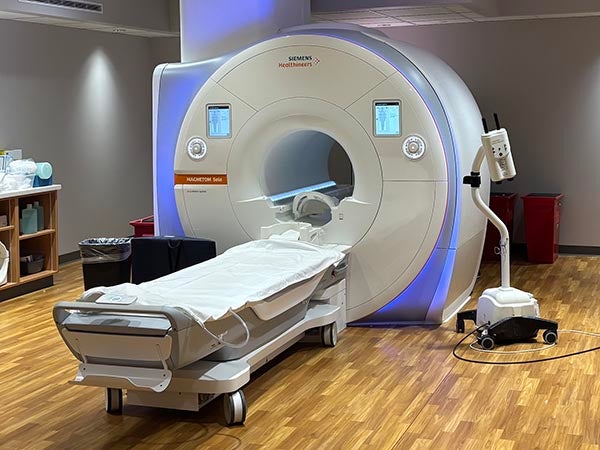St. Mary Medical Center’s cardiac MRI is first of its kind in the area
June 17, 2025Categories: Blog Posts
Tags: Cardiology
 Bucks County patients with complex heart conditions can now receive a diagnosis in their own backyard thanks to a brand new cardiac MRI at St. Mary Medical Center.
Bucks County patients with complex heart conditions can now receive a diagnosis in their own backyard thanks to a brand new cardiac MRI at St. Mary Medical Center.
James Kilcoyne, DO, a cardiologist at Cardiology Langhorne, is thrilled to introduce this technology, which he says will help the hospital become a “one-stop-shop” for cardiac care.
“It’s really exciting because it’s going to help our patients, it’s going to enhance our ability to make complex diagnoses and, more than anything, it’s going to increase access to specialty care that our cardiology patients need,” says Dr. Kilcoyne.
Unlike a CAT scan or echocardiogram, where soft tissue can make it difficult to get clear images of the heart, a cardiac MRI has no obstructions.
“It’s more accurate because the MRI isn’t inhibited by your body,” says Dr. Kilcoyne. “With an MRI, the soft tissue does not get in the way of the signal, so we can get really clear views of the heart. Then, we can look at masses, the function of the heart, scarring and tissue characterizations, diseases like scars from heart attacks and where things would infiltrate the heart to not make it function very well.”
The cardiac MRI can also detect artery blockages, diseases like heart failure and more.
“With an MRI, the soft tissue does not get in the way of the signal, so we can get really clear views of the heart. Then, we can look at masses, the function of the heart, scarring and tissue characterizations.” - James Kilcoyne, DO
Cardiology Langhorne had its first cardiac MRI patient in early May, with the scan taking approximately 45 minutes to complete. This new technology utilizes the existing MRI machine with the addition of several special pieces of equipment that help scan the body in a different way.
“Most MRIs are done with very standard view planes. There are three planes of the body: up and down, across and then coronal. In cardiology, those are not useful because the heart is angled a certain way,” he says. “The first scan came out great.”
Looking ahead, Dr. Kilcoyne is confident that this is the beginning of a bright future for cardiology, allowing patients to receive faster and more accurate diagnoses than ever before.
“It’s a trend in the right direction. Cardiac imaging has been advancing and it is important for us to stay current for our patients,” says Dr. Kilcoyne.
